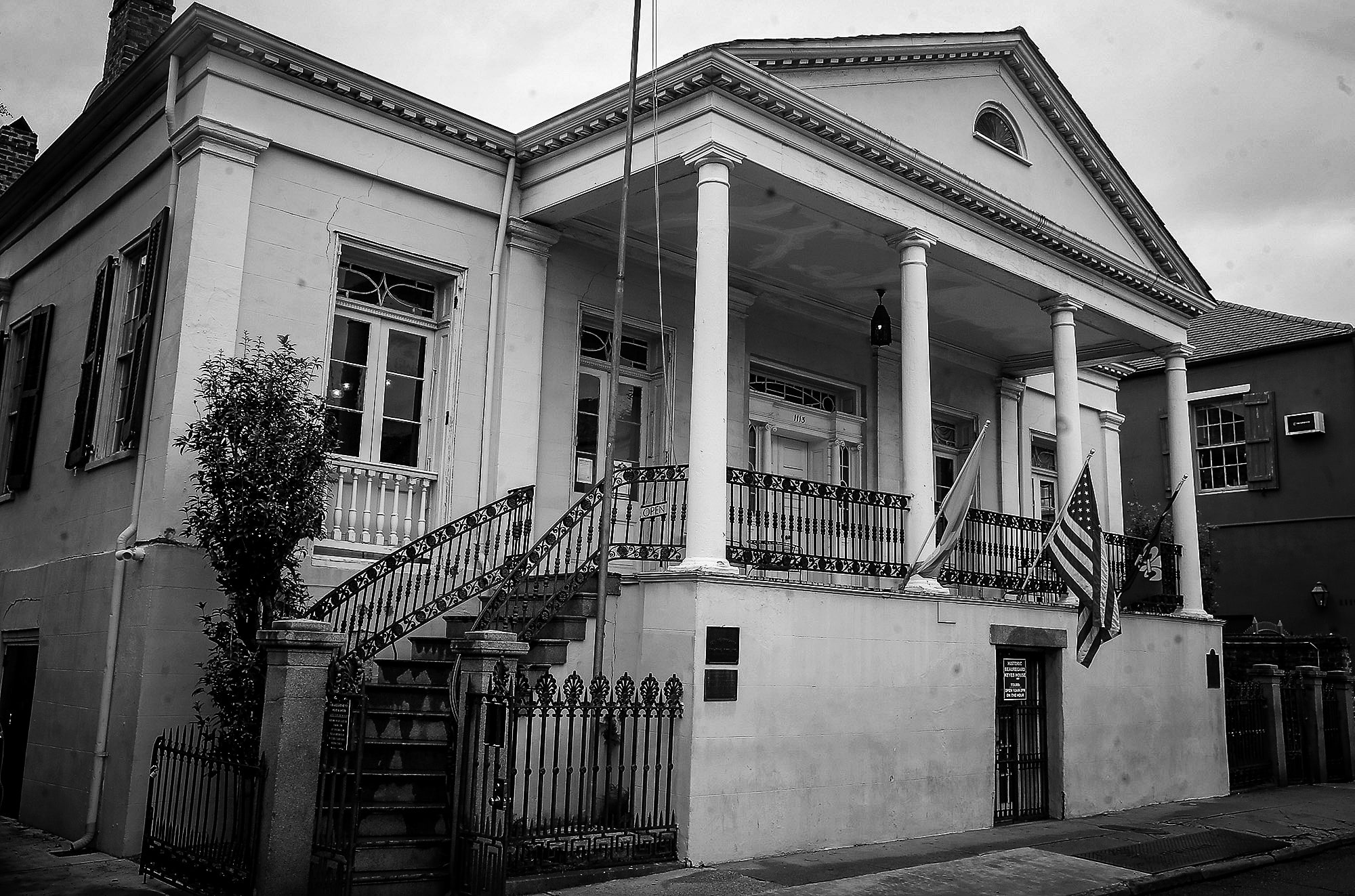It begins so tamely.
A tour group makes its way through a historical home across the street from the Old Ursuline Convent in the French Quarter. As they pass the requisite fountain at the center of the brick courtyard, a cat slips up to the group and presses herself to the tour guide’s leg, a bell around her neck swinging back and forth but emitting no sound. This would be Caroline, a resident feline often seen around the house or in the courtyard. If you ever forget the name of the cat, just go look under the stairway in the back corner of the courtyard. Her name is engraved on her tombstone: Caroline: Our Loyal Cat. May 9, 1994. Yes, Caroline is a ghost cat. But she is not the only spirit haunting the Beauregard-Keyes House.
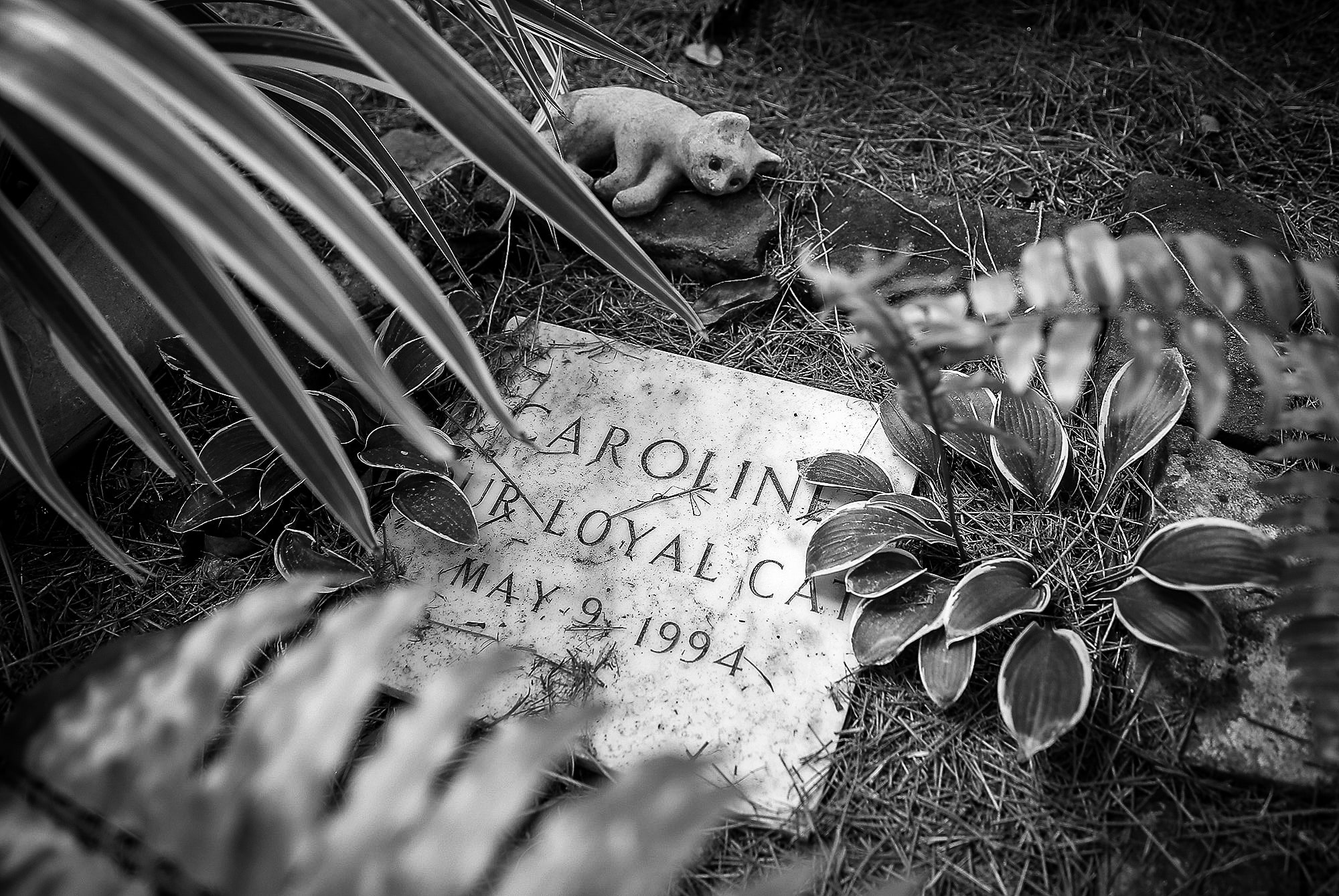
The History
The most well-known ghost stories swirling around the Beauregard-Keyes house in the 1100 block of Chartres Street involve one of the house’s namesakes, Confederate General P.G.T. Beauregard. The story goes that in 1861, just days after being appointed commandant at the West Point Military Academy, Beauregard’s position was revoked and he returned home to New Orleans and to his second wife Caroline (no relation to the cat). Caroline, sister-in-law to Senator John Slidell, of Slidell fame, planned a grand ball to welcome her husband home, a ball to be held in the spacious dining room off the main hallway that bisects the building.
MORE: So you think your NOLA pad is haunted? Here’s some things you can get to check
But alas, military duty called before the soiree could be held as Beauregard went off to fight with the Confederate Army at Fort Sumter where he oversaw the first shots fired in the Civil War. He would never see his beloved Caroline again, for she would die of illness in 1864 while he was away.
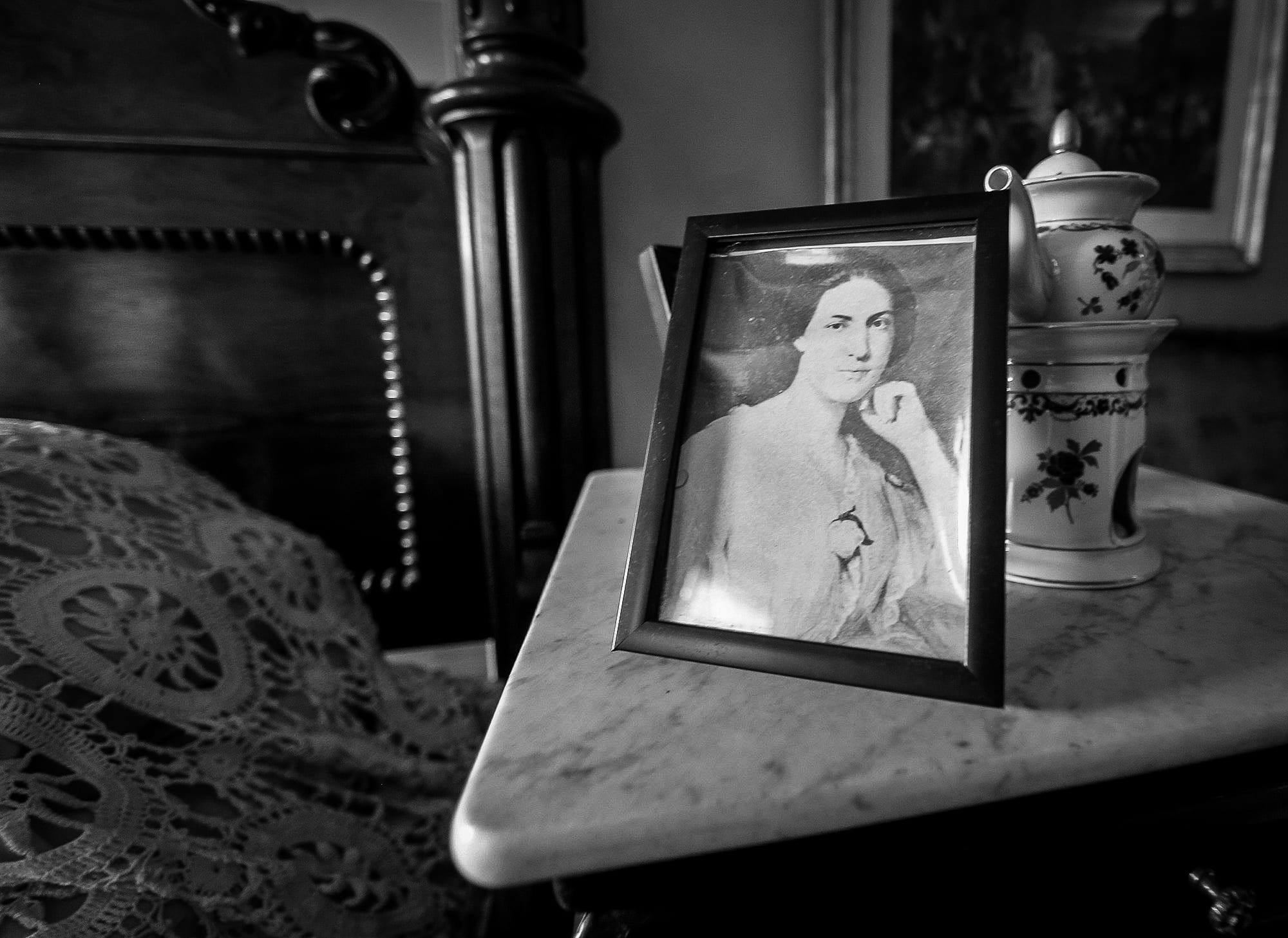
The story goes that in the years after Beauregard’s death that ethereal orchestra music, dancing feet and laughter could be heard, the eternal echoes from Caroline’s grand ball that never occurred. Other tales told of the ghostly silhouettes of Beauregard in his full uniform and his beloved Caroline dancing past the veiled windows of the ballroom. The ghostly sounds of cannon fire and the horrible sounds of battle emanating from the house are said to be Beauregard reliving his battles for eternity while pining for his lost love Caroline in the home they once shared.

Tragic … And Improbable?
It’s all so tragic, and if you listen to Beauregard-Keyes tour guide Rosanna Shepherd, all so improbable. You see, spoiler alert, the couple never actually lived in the house. They lived over on Esplanade Avenue, which is where Caroline died. It wasn’t until 1865, a year after Caroline passed, that the general came to live at the house and even then, he was just a renter who stayed in a building out back for a couple of years before moving on.
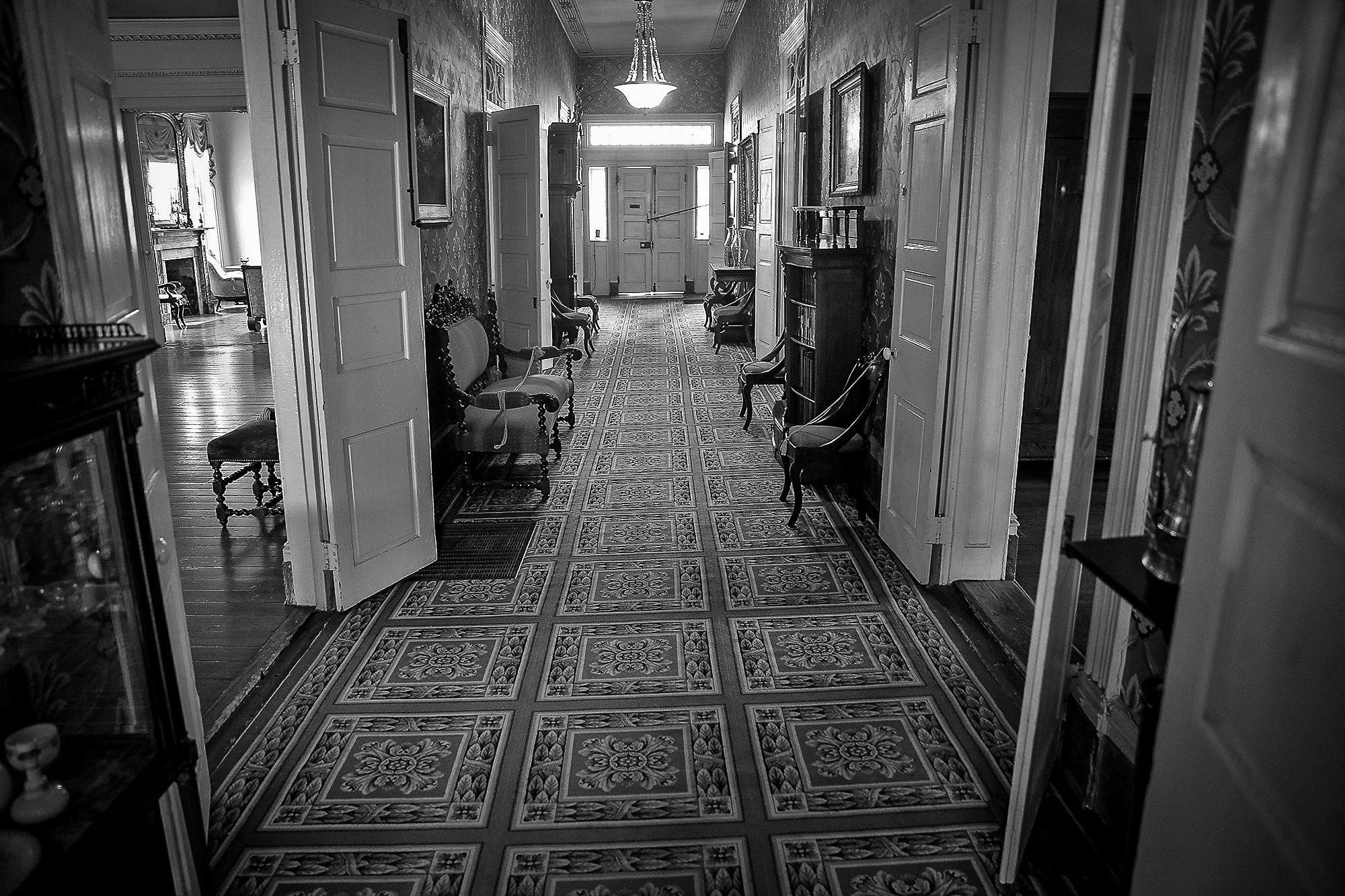
So, sorry, that’s all the spooky stories you get today. One ghost cat. Sleep well. (But, you know better than that.)
Documenting The Hauntings
But, wait, there is the matter of the scary 3-ring binder. In the early 1980’s, one of the directors of the house began to keep a small blue binder that recorded supernatural encounters experienced by workmen, tour guides and visitors to the house. Divided by year with the most recent entries in the front, some accounts are written directly onto the pages, others copied out on various types of paper and taped inside. Some of the spooky experiences listed in the binder include:
July 17, 2010: An AT&T technician working in the basement saw a man sitting in a chair, watching him. The man smiled then disappeared moments later.
May 21, 2004: A man came to water plants in the courtyard when he saw a “lady in white” pass through the courtyard and disappear beneath the steps. Tour guides also reported seeing the woman in white on other occasions.
February 18, 1991: An employee felt someone brush past in the hallway between the two bedrooms and turned in time to see a lady’s dress disappear into the ballroom.
October 5, 1995: An employee saw the hem of a long, beige dress pass by the parlor and down the hallway.
August 25, 1995: Footsteps and heavy dragging sounds were heard in the ballroom but nothing was seen.
December 1992: Several visitors heard faint but lively party music coming from the front of the house.
July 8, 1992: An employee looking out the kitchen door saw the upper torso of a “lady in white” walk from the corner and down the stairs.
October, 1986: “Ghost dog in Mrs. K’s bedroom. Is it Lucky?”
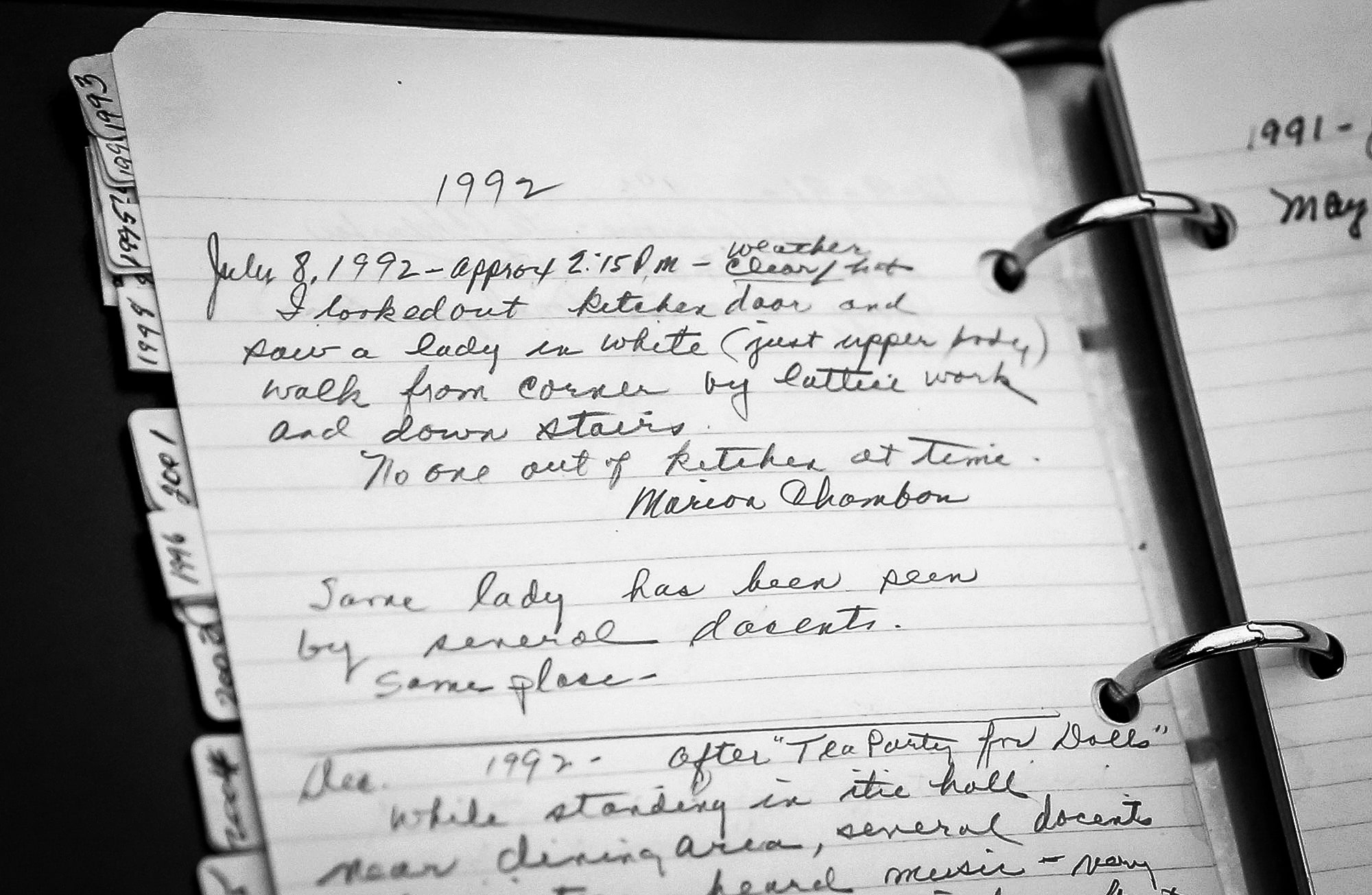
Ghost Dog
That entry would be in relation to the other, arguably more famous namesake of the Beauregard-Keyes house, bestselling historical novelist Frances Parkinson Keyes (pronounced “Kai’s”, like Cobra Kai pluralized.) Keyes moved down from New England and into the ramshackle dwelling in 1944 and began to renovate it to its former glory. She even wrote a fictionalized account of Beauregard’s life in 1962 titled “Madame Castel’s Lodger.” When Keyes died in the house in 1970, she had already established the Keyes Foundation which continues to this day to operate the house as a museum. And no, Keyes doesn’t seem to haunt the house.
But her cocker spaniel Lucky appears to.
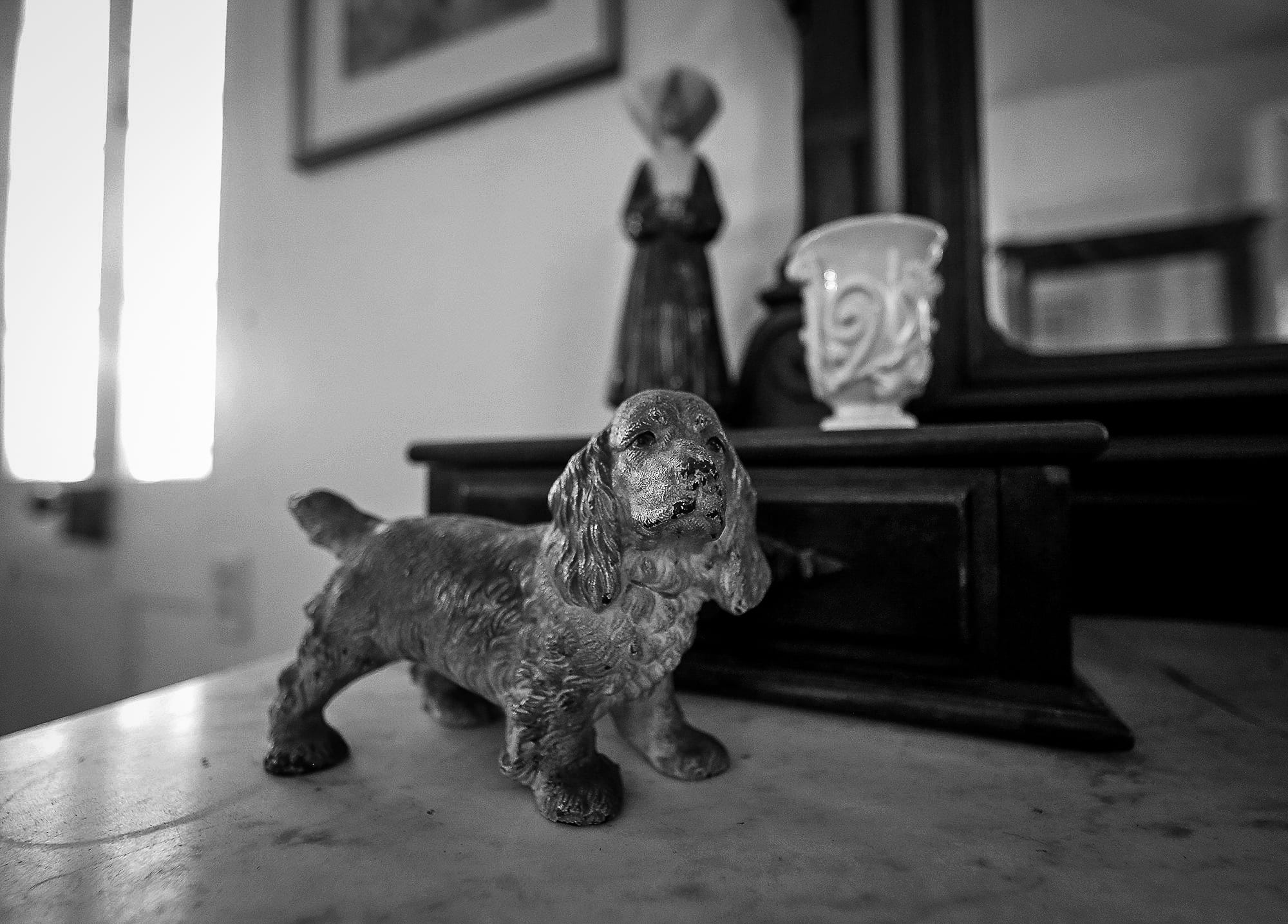
It is said that when Keyes died, Lucky climbed into her bed days later and died from grief. An event photographer recently saw the ghostly dog hanging around the fireplace in the Keyes bedroom. A blind woman reported that her seeing-eye dog went ballistic in the same room, which it only ever did when another dog was present.
Hauntings From One Of The “Bloodiest And Most Infamous Crimes”
But a few dress sightings and a couple of paranormal pets aren’t the only spooky happenings going on at Chez BK. Rosanna, the tour guide, stands on the back porch overlooking the courtyard and tells the true story of one of the bloodiest and most infamous crimes in New Orleans lore. A family of Sicilian immigrants named Giacona purchased the house in 1904 and ran a liquor business out of it, even producing their own wine in the basement (No, it wasn’t an actual basement, just the dank underside of the house, but if you’re from New Orleans you know that.)
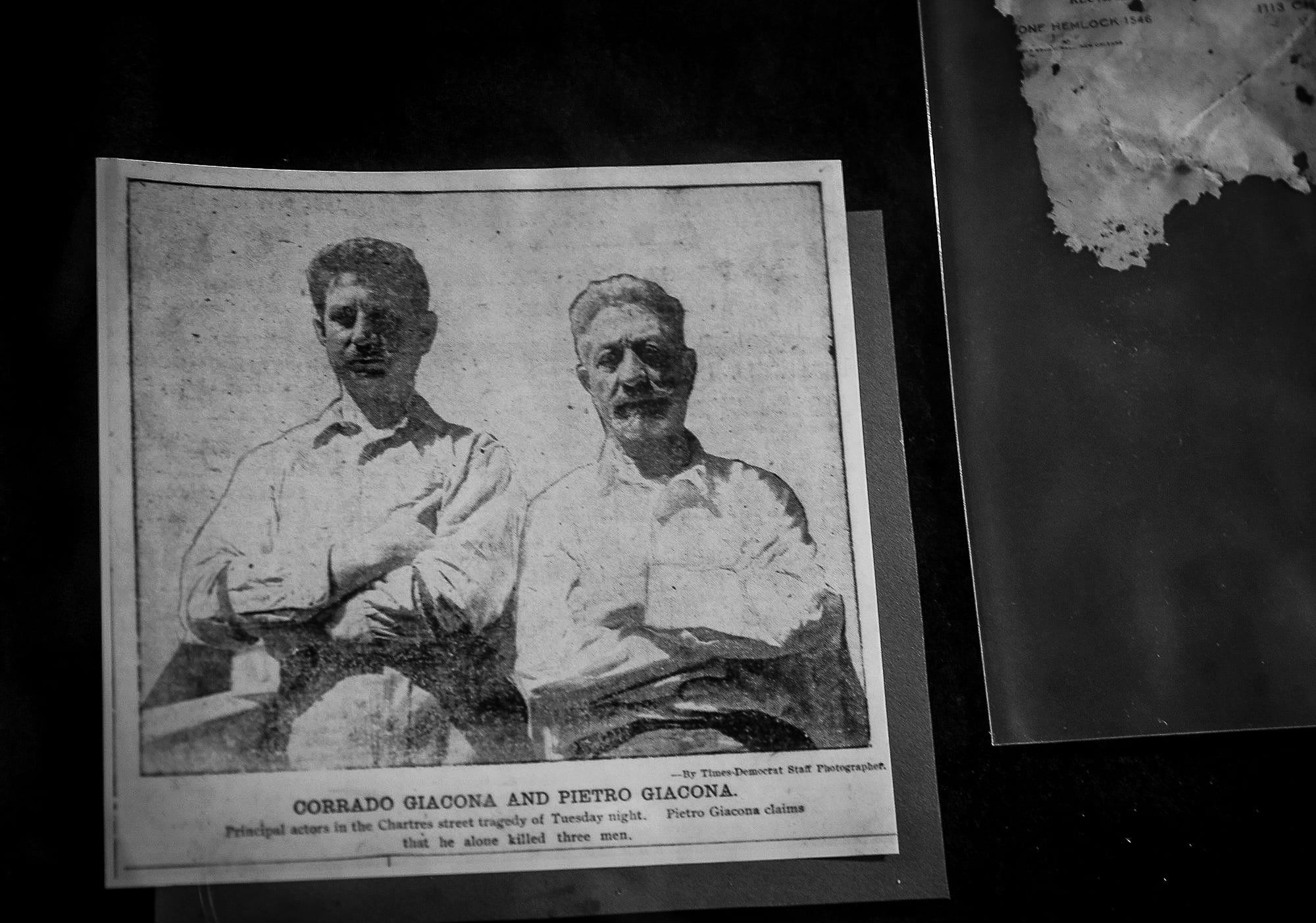
On the evening of June 16, 1908, a “protection” group known as the Black Hand came by for a visit. The four interlopers sat at the table on the back porch and demanded money from the Giaconas under the thinly veiled threat of violence. Patriarch Pietro finally appeared to cave to their extortion, going into the house ostensibly to fetch the money. Instead he returned with a rifle and he, with the possible help of his son Corrado, shot all four members of the Black Hand, killing three on the spot. The fourth thug was found collapsed several blocks away, pressing a dead chicken to his neck to staunch the bleeding from the foul play.
The sounds of otherworldly gunfire and the screams of wounded men have been reported by those who believe the mobster bloodbath reverberates in the house to this very day. One ghost hunter found there to be “a large cold spot” on the back porch where the killings occurred. Another ghost guide says “trails of blood” flow from the scene of the crime and that passers-by have witnessed “guns waving in the air by unseen hands.”
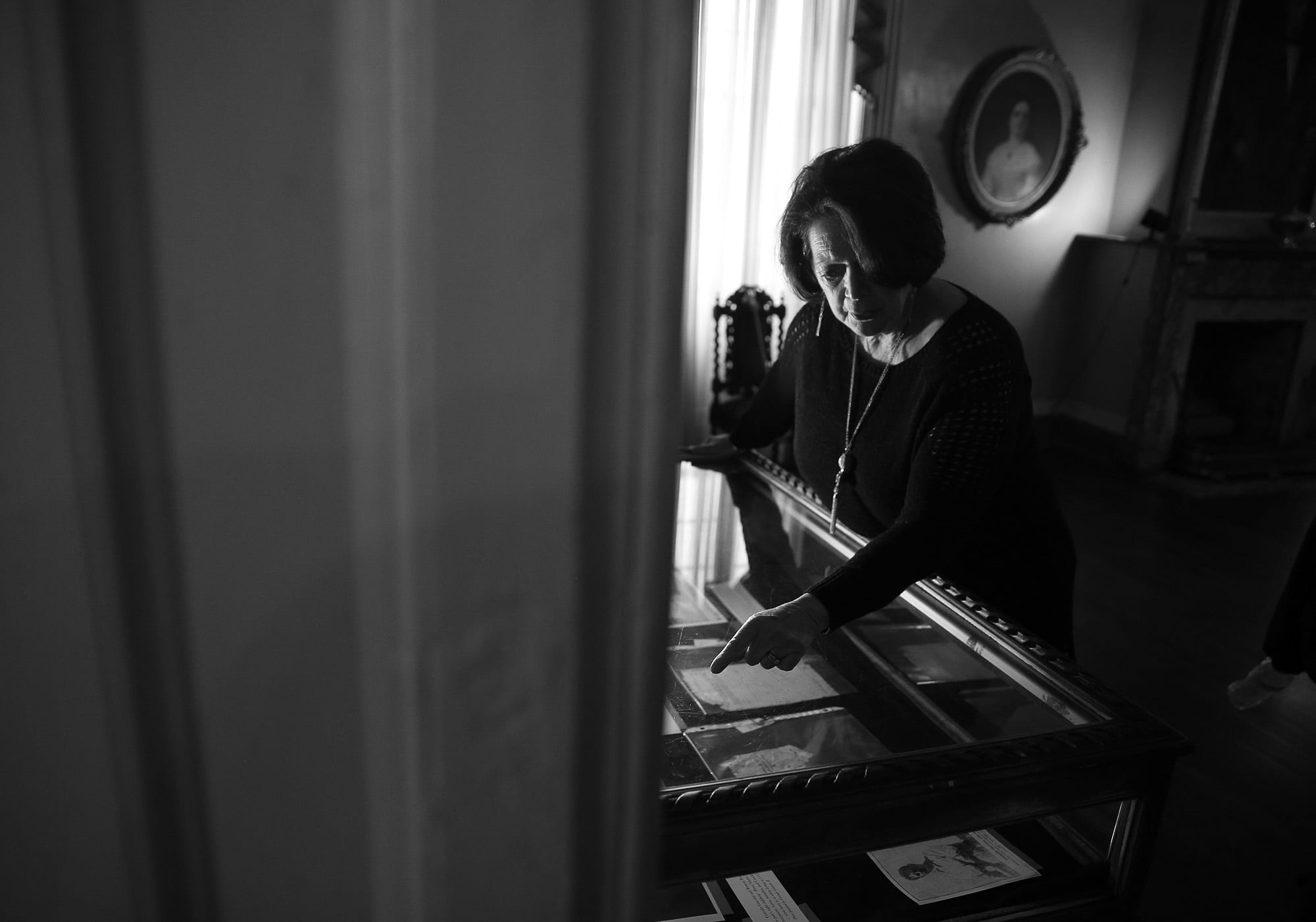
The Past Is Never Dead
Tour guide Rosanna stands at the place of the massacre and enthusiastically re-enacts the violence to entranced visitors before showing them portraits of the Giaconas kept in a glass display case in the ballroom. She tells of how, in the aftermath of the massacre, the Giaconas were arrested, tried and exonerated. To this tale she adds a final kicker: she is Corrado’s granddaughter, Rosanna Giacona Shepherd. One way or another, the past is never really dead at the Beauregard-Keyes House.
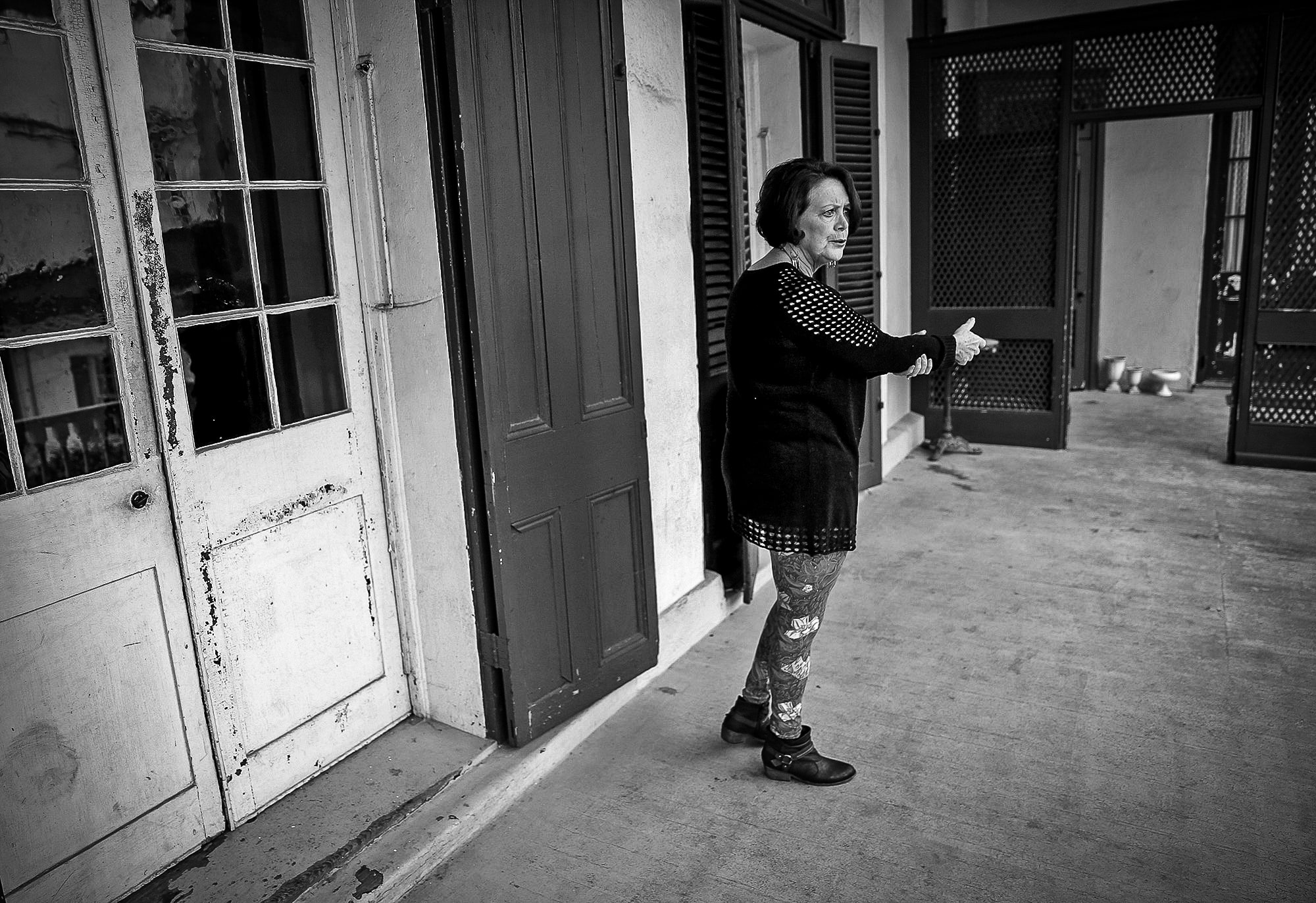
References
Beauregard-Keyes House website. https://www.bkhouse.org/ (Accessed November 2019)
Dwyer, Jeff. Ghost Hunter’s Guide to New Orleans. Pelican Publishing: Gretna, LA, 2016
Kaplan-Levenson, Laine. Wine and Blood at the Beauregard-Keyes House. WGNO, 29 October, 2015. https://www.wwno.org/post/wine-and-blood-beauregard-keyes-house
(Accessed November 2019)
Stuart, Bonnye. Haunted New Orleans: Southern Spirits, Garden District Ghosts, And Vampire Venues. Globe Pequot: Guilford, CT, 2012

